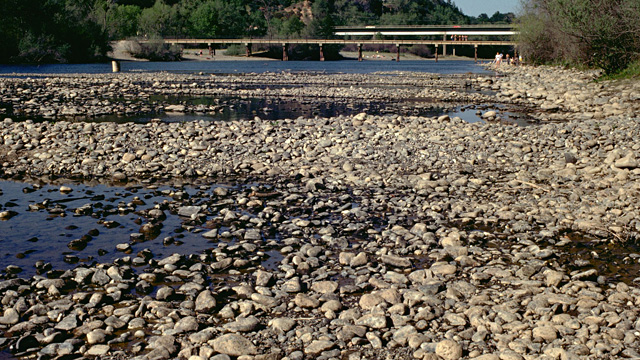Emergency fishing closures were approved today on the American and Russian rivers due to the worsening drought in California.
The state Fish and Game Commission approved the closures unanimously at its meeting Wednesday morning in Sacramento. The action also extends closures on hundreds of smaller coastal streams.
The vote means that all fishing will be banned on the American River from Nimbus Dam downstream to the power lines crossing Ancil Hoffman Park through April 30.
The closures were adopted to protect threatened salmon and steelhead fish from fishing pressure as their habitat has shrunk amid one of the worst droughts in state history. Officials are concerned that anglers are more likely to unintentionally trample the species’ egg nests, or redds, in the gravel riverbeds and more easily kill fish in the process of angling for them.
But Stafford Lehr, chief of the fisheries branch at the California Department of Fish and Wildlife, said the closures are not about “villifying” anglers, but recognizing that extraordinary measures are necessary to protect species already under stress.
“This is about maximizing the protections for the wild fish in these systems, given the projected outlook of a compounding or intensifying drought,” said Lehr. “It is expected we’re going to have compounding mortality (to fish) as we move through the season.”
Lehr’s agency last week took administrative action to ban fishing on coastal streams to fishing. However, in some cases, its closure authority extended only to Jan. 31. It also lacked authority to close the American and Russian rivers by administrative action.
The commission’s vote Wednesday extends the coastal closures to April 30, and adds closures for the same duration on the American and Russian rivers. The closures are expected to take effect by Feb. 23.


